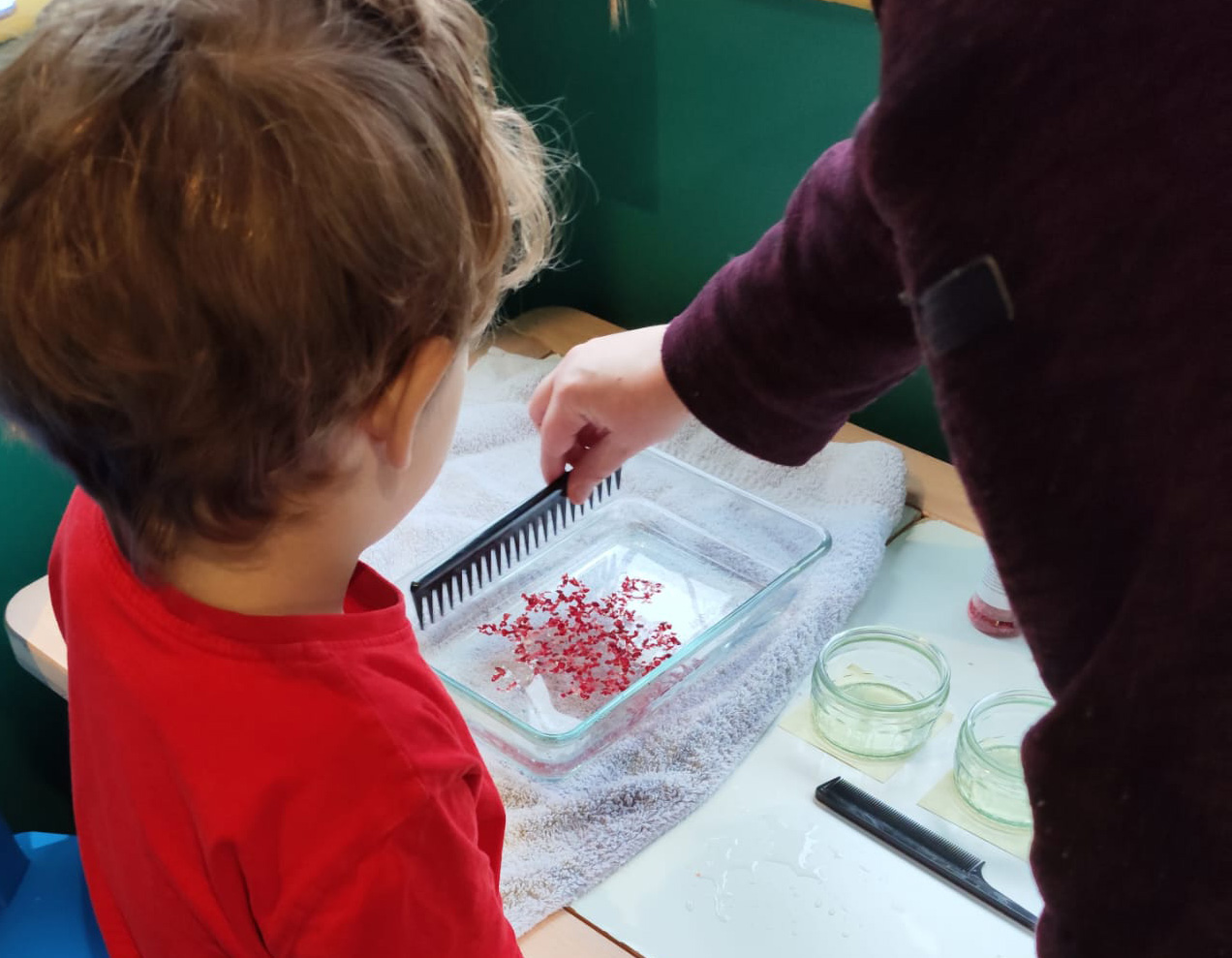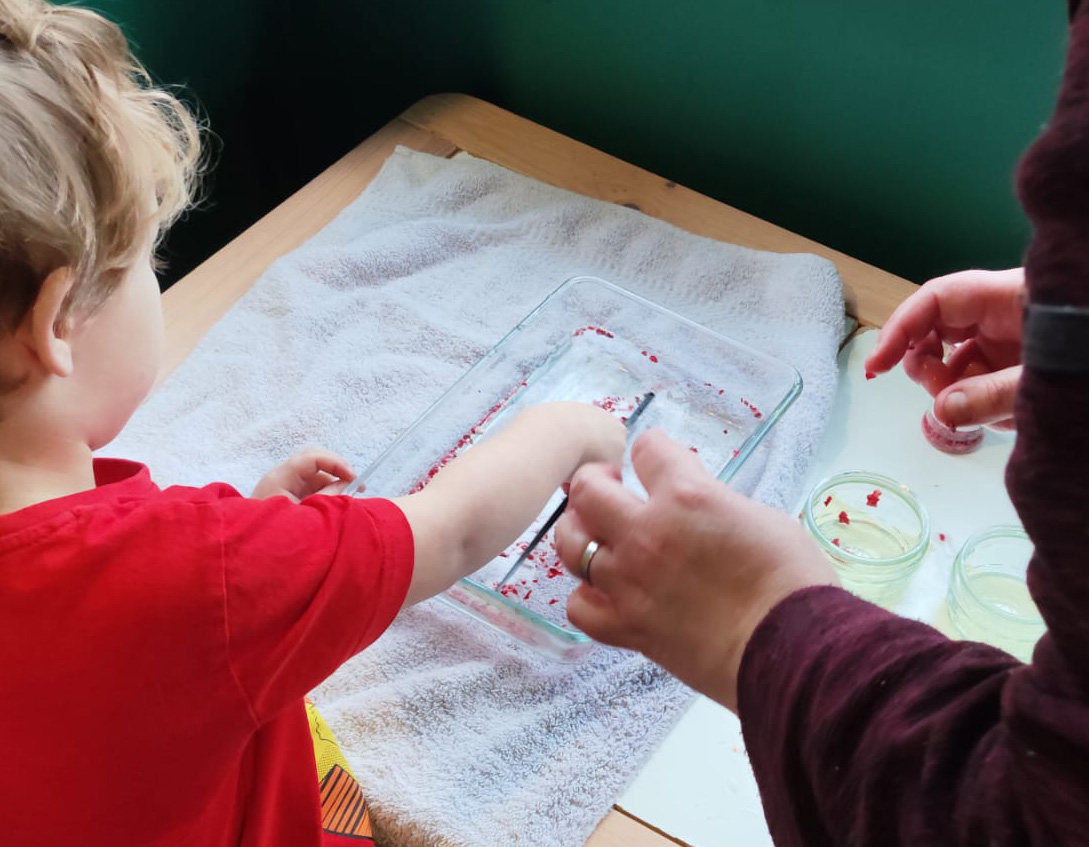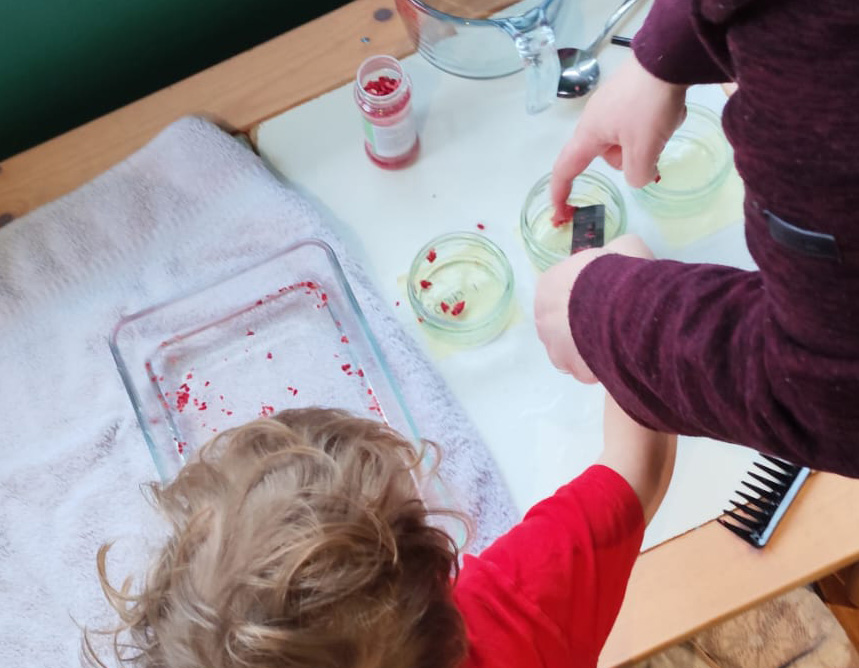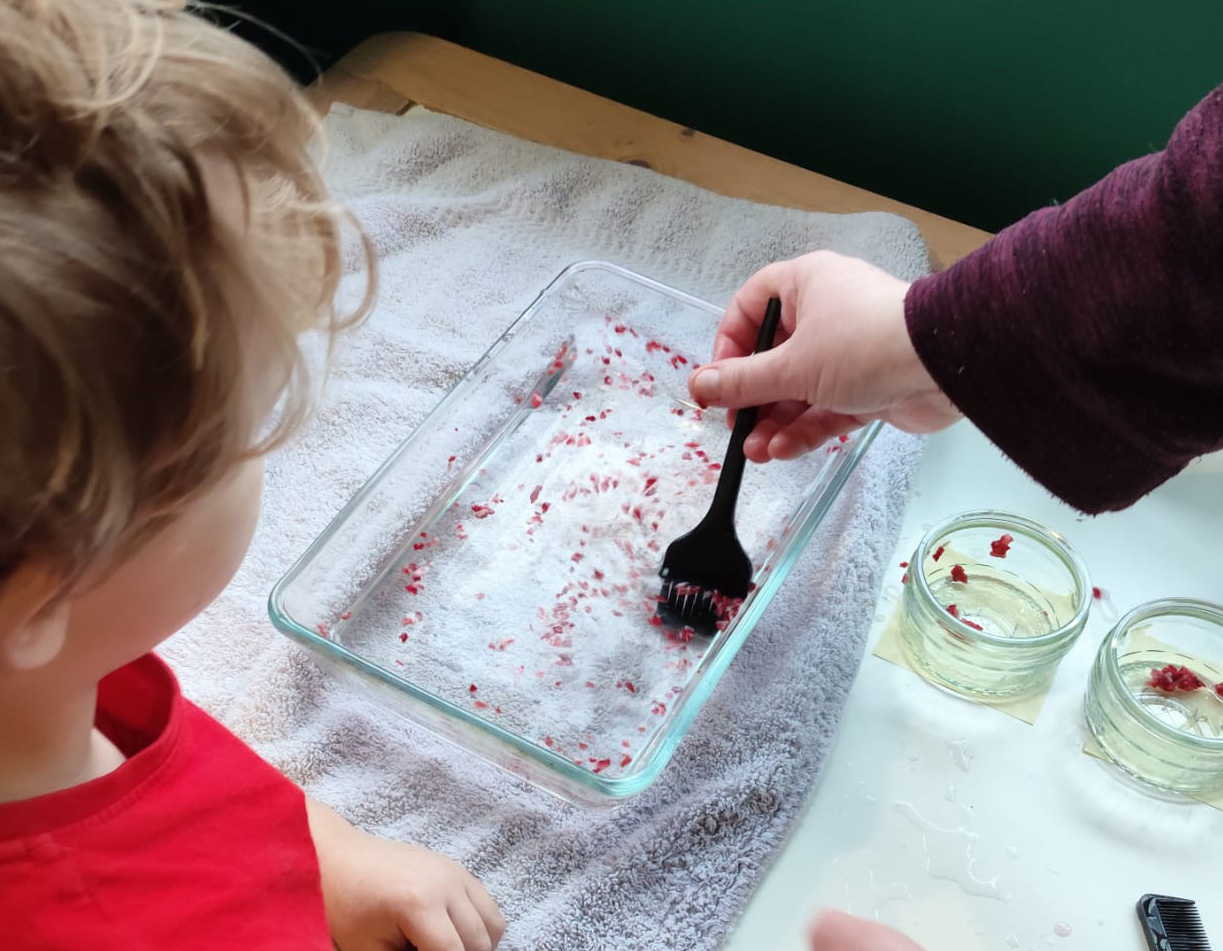How does the baleen in a baleen whales mouth work?
Little O (3 year old) and I tried an experiment today using objects found around our home to explore how baleen whales filter feed.
My favourite moment about this exercise…
Little O walking around proudly telling his brother and his dad that he was doing science – “I doing science!”
What you will need:
- 2-3 different combs or brushes, with different shape/size teeth
- A dish or deep tray
- Jug of water
- A spoon
- 2-3 small containers to put your collection samples in
- Scrap paper for labels
- Scrap foam (cut up small) or floating food (we used freeze-dried strawberries as they simulated krill quite well)
- An old towel or two to catch spills
- (Optional) Resources from Curious about whales study unit
- (Optional) Science experiment worksheet

What we did:
First, we discussed how some whales feed differently to others. We compared teeth versus baleen, and how baleen works similarly to a comb.
We examined the different implements, combs versus tint brush and predicted which one would work best at collecting our ‘whale food’.
Next, we poured water into our tray and sprinkled our chosen ‘whale food’ onto the surface. We used freeze-dried strawberry pieces (that I had bought for the boys to decorate bakes with but quickly discovered they didn’t like them!).

One comb at a time, we pulled each across the surface of the water. We observed how the spacing between the comb’s teeth affected how much food was caught and how much water passed through.

Little O couldn’t resist stirring the water and ‘whale food’ with his implement, so we had to wait for the water to settle in between tests.

We scraped the food off each comb into our ‘sample’ pots for later comparison.

I found an old tint brush which I thought could serve as another variable in our experiment. I wondered if it would catch food more effectively.
Once we had collected food using all three implements (two combs and one brush), we compared our samples to see which was most effective.
Results
The most effective tool was the second comb that had smaller, finer teeth set closer together. Although the brush caught some food, it wasn’t as efficient. The smaller surface area may have been a factor. Baleen whales have large upper jaws where the baleen is attached, so rather than having a narrow width of baleen, the wider, narrower-toothed comb more closely resembled how they filter feed, pushing water through the fine teeth.
What to do after
After our experiment, I showed Little O some videos of baleen whales filter feeding. We watched them skimming the surface with their mouths open and lunging through the water taking large mouthfuls.
Extension for older children
For older children, use this science experiment worksheet here to record your observations, predictions, and results. This will help develop their scientific recording skills and encourage more detailed analysis of what they observed during the experiment.
Here are some of my favourite clips of whales feeding.
The first clip shows the bowhead whale, which has the largest mouth of any whale including the blue whale. Their baleen can grow up to 4 metres long—the longest of any baleen whale. Here you can see them skim feeding with their mouths wide open, feeding on plankton.
The second clip is of a sei whale, one of the smaller species of baleen whale, lunging through a ball of fish that has been pushed to the surface.
